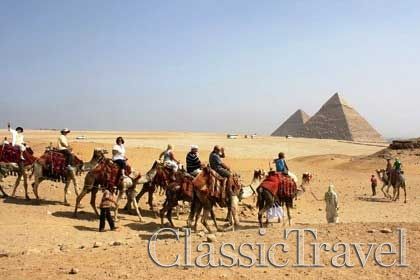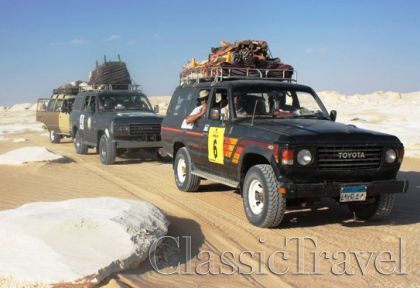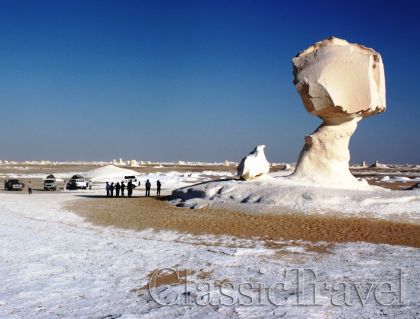Classic Egypt









Classic Egypt
Experience the beauty and history of Egypt, visiting Cairo, Memphis, Giza, and Abu Simbel before embarking on a Nile cruise ship. Discover captivating ruins and majestic natural scenery between Aswan and Luxor on a luxurious 5-day cruise.
-
Author: Skora Family, Toms River NJ (Trip Participant)Travel date: 2023Date posted: 15 June 2023
-
Author: Malgosia Ciszkowska (Trip Participant)Travel date: 1-10 marzec 2019Date posted: 12 March 2019
-
Author: Malgosia Ciszkowska (Trip Participant)Travel date: March 1-10, 2019Date posted: 12 March 2019
Add Comments or Review the Trip
Day 1: Departure
Meet at the JFK airport. Departure at 6:30pm with EgyptAir via non-stop flight to Cairo. Dinner and breakfast on the plane.
2: Arrive in Egypt
Arrival to Cairo Int'l Airport at 11:00am. We will be welcome by our guide. On the way to our hotel, we will have a lunch. Check into our hotel. At 6pm transfer the Sphinx Theatre, to attend sound and light show in Pyramids area. Back to our hotel for welcome dinner and overnight in Cairo. (L, D)
3: Tour of Memphis and Step Pyramid of Sakkara and Pyramids of Giza
Breakfast at hotel. Full-day tour visiting Memphis, ancient capital of Egypt believed to be the site visited by Abraham to address the Pharaoh of Egypt. During its golden age, Memphis thrived as a regional center for commerce, trade, and religion.
Visit the Step Pyramid of Sakkara. It is considered as the oldest complete stone building complex known in history; the Pyramid of Djoser, built during the Third Dynasty. Another sixteen Egyptian kings-built pyramids at Saqqara, which are now in various states of preservation. High officials added private funeral monuments to this necropolis during the entire Pharaonic period. It remained an important complex for non-royal burials and cult ceremonies for more than 3,000 years, well into Ptolemaic and Roman times.
After lunch, visit the Great Pyramids of Giza; Cheops, Chefren & Mikarinus. The Great Pyramid and the Pyramid of Khafre are the largest pyramids built in ancient Egypt, and they have historically been common as emblems of Ancient Egypt in the Western imagination. They were popularized in Hellenistic times, when the Great Pyramid was listed by Antipater of Sidon as one of the Seven Wonders of the World. It is by far the oldest of the Ancient Wonders and the only one still in existence. Drive through the Pyramids Plateau with a strong presence of history, arriving at largest and most famous great Sphinx of Giza with a man’s head and a lion’s body, representing the intellectual and physical power of ancient Egyptians. It was cut from the bedrock; the original shape of the Sphinx has been restored with layers of limestone blocks. Its nose is broken. It measures 73 m (240 ft) long from paw to tail, 20 m (66 ft) high from the base to the top of the head and 19 m (62 ft) wide at its rear haunches. It is the oldest known monumental sculpture in Egypt and one of the most recognizable statues in the world. The archaeological evidence suggests that it was created by ancient Egyptians of the Old Kingdom during the reign of Khafre (c. 2558–2532 BC).
Dinner and overnight in Cairo. (B, L, D)
4: Flight: Cairo - Luxor / Karnak & Luxor Temples
Early morning transfer to Cairo airport to fly to Luxor with MS#160, departing at 8:05 am.
Arrive at Luxor. Transfer to town to visit Karnak Temple. The complex of Karnak Temple is a vast open site and includes the Karnak Open Air Museum. It consists of four main parts, of which only the largest is currently open to the public. The term Karnak often is understood as being the Precinct of Amun-Re only because this is the only part most visitors see. The three other parts, the Precinct of Mut, the Precinct of Montu, and the dismantled Temple of Amenhotep IV, are closed to the public. There also are a few smaller temples and sanctuaries connecting the Precinct of Mut, the Precinct of Amun-Re, and the Luxor Temple.
Transfer to the Nile cruise for check-in and lunch onboard.
In the evening, visit the illuminated Luxor Temple. The Luxor Temple was built during the New Kingdom and dedicated to the Theban Triad consisted of Amun, his consort Mut, and their son Khonsu. Dinner & overnight on board. (B, L, D)
5: Valley of Kings; Esna - Edfu
Optional: early morning hot-air balloon flight over west Luxor and Valley of the Kings.
After early breakfast, drive to the west side of Luxor: explore the great Valley of Kings, where generations of Pharaohs were buried in crypts cut into the cliffs (three tombs included. The Valley was used for primary burials from approximately 1539 BC to 1075 BC. It contains at least 63 tombs, beginning with Thutmose I (or possibly earlier, during the reign of Amenhotep I) and ending with Ramesses X or XI, although non-royal burials continued in usurped tombs. On the way we will stop by the Colossi of Memnon are two massive stone statues of the Pharaoh Amenhotep III, who reigned in Egypt during the Eighteenth Dynasty of Egypt. Since 1350 BCE, they have stood in the Theban Necropolis, located west of the River Nile from the modern city of Luxor.
Proceed to visit the Temple of Queen Hatshepsut, is a mortuary temple built during the reign of Pharaoh Hatshepsut of the Eighteenth Dynasty of Egypt. Located opposite the city of Luxor, it is a masterpiece of ancient architecture. Its three massive terraces rise above the desert floor and into the cliffs of Deir el-Bahari. This temple was rebuilt by the polish archeologist from the Warsaw University.
Transfer back to the cruise boat for lunch. We begin our journey on the Nile River Cruise to Esna, where we cross the lock and continue sailing to Edfu. Dinner and overnight on board in Edfu. (B, L, D)
6: Sail: Edfu - Kom Ombo - Aswan
After breakfast, visit Edfu Temple by horse carriages. Discover the huge temple dedicated to the God Horus. The temple was built in the Ptolemaic Kingdom between 237 and 57 BC. The inscriptions on its walls provide important information on language, myth, and religion during the Hellenistic period in Egypt. In particular, the Temple's inscribed building texts "provide details [both] of its construction, and also preserve information about the mythical interpretation of this and all other temples as the Island of Creation."
Lunch on board. Sail to Kom Ombo, where you will visit the unusual double temple of Kom Ombo, dedicated to the crocodile god Sobek and the god Haroeris. It was constructed during the Ptolemaic dynasty, 180–47 BC. Some additions to it were later made during the Roman period. Evening sailing to Aswan. Dinner and overnight on board. (B, L, D)
7: Aswan
After breakfast, you will visit the Unfinished Obelisque (Granite Quarry). Its creation was ordered by Hatshepsut (1508–1458 BC), possibly to complement what would later be known as the Lateran Obelisk (which was originally at Karnak and was later brought to the Lateran Palace in Rome). The unfinished obelisk is nearly one-third larger than any ancient Egyptian obelisk ever erected. If finished it would have measured around 42 meters (138 ft) and would have weighed nearly 1,090 tons a weight equal to about 200 African elephants. The obelisk's creators began to carve it directly out of bedrock, but cracks appeared in the granite and the project was abandoned.
Visit Philae Temple dedicated to the goddess ISIS. Philae was originally located near the expansive First Cataract of the Nile in Upper Egypt and was the site of an Egyptian temple complex. These rapids and the surrounding area have been variously flooded since the initial construction of the Aswan Low Dam in 1902. The temple complex was dismantled and moved to nearby Agilkia Island as part of the UNESCO Nubia Campaign project, protecting this and other complexes before the 1970 completion of the Aswan High Dam.
Lunch then visit High Dam, rock-fill dam across the Nile River, at Aswan.
Afternoon felucca sail to visit the Botanical Garden (Kitchener Island). The island was previously known as Kitchener's Island, named after Lord Kitchener who owned it He was gifted the island, when he served as Consul-General in Egypt from 29 September 1911 to June 1914. (B, L, D)
8: Aswan - Abu Simbel
After early breakfast we will check-out from the ship and begin 3.5h drive south to Abu Simbel. Upon arrival, transfer to the hotel for “hopefully” an early check-in. After short relax, we will visit the temple of Abu Simbel, one of the most recognizable places in Egypt. Built in 1244, B.C. Abu Simbel contains two temples carved in the mountainside. The larger of the two temples contains four colossal statues of the sitting Pharaoh Ramses II (1303-1213 B.C.) with a height of 21 meters. And the second, smaller temple built for Nefertari. At its head are two figures of the queen and four pharaohs, each with a height of 10 meters.
Evening optional Sound & Light show at the theatre of Ramses II. Dinner & overnight in Seti Abu Simbel Lake Resort. (B, L, D)
9: Abu Simble
Free day at Abu Simble in our Seti Abu Simbel Lake Resort. Lunch, dinner and overnight in our Lake Resort. (B, L, D)
10: Flight: Abu Simble – Cairo
Fly back to Cairo. Arrival at Cairo Airport and transfer the hotel. If time permits, we will start City Tour of Carto. Dinner and overnight in Cairo. (B, D)
11: City Tour Cairo
After breakfast we will start a full day city tour of Cairo. First stop at Egyptian Museum with collection.
Then, the Alabaster Mosque of Muhammad Ali is the most popular Islamic Mosque. Situated on the summit of the citadel, this Ottoman Mosque, the largest to be built in the first half of the 19th century, is, with its animated silhouette and twin minarets, the most visible mosque in Cairo.
After lunch, we will stop at one of the oldest churches in Egypt, which history dates to the 3rd century A.D - Saint Virgin Mary's Coptic Orthodox Church also known as the Hanging Church (El Muallaqa), later Saints Sergius and Bacchus Church a traditionally believed to have been built on the spot where the Holy Family, Joseph, Mary and the infant Jesus Christ, rested at the end of their journey into Egypt. Return to hotel for farewell dinner. (B, L, D)
12: Depart Egypt – Arrive New York
After early breakfast in our hotel, transfer to Cairo airport for our departure to New York. Depart at Egypt Air at 10:30am. Arrive JFK at 4:30pm. (B)
***End of our Trip ***
B - Breakfast; L - Lunch; D - Dinner
Cairo
Cairo is the capital of Egypt, the largest city in Africa and the 16th most populated metropolitan area in the world. Cairo is also ranked as one of the most densely populated cities in the world. Nicknamed "The City of a Thousand Minarets" for its preponderance of Islamic architecture, Cairo has long been a centre of the region's political and cultural life. Cairo was founded by the Fatimid dynasty in the 10th Century, but the land composing the present-day city was the site of national capitals whose remnants remain visible in parts of Old Cairo. Cairo is also associated with Ancient Egypt due to its proximity to the ancient cities of Memphis, Giza and Fustat which are nearby to the Great Sphinx and the pyramids of Giza.
The Nile River
The Nile is a major north-flowing river in North Africa, generally regarded as the longest river in the world. It is 6,650 km (4,130 miles) long. It runs through the nine countries of Sudan, Burundi, Rwanda, DR Congo, Tanzania, Kenya, Ethiopia, Uganda and Egypt.
Memphis
Memphis was the ancient capital of Aneb-Hetch, the first nome of Lower Egypt. Its ruins are located near the town of Helwan, south of Cairo. According to legend related by Manetho, the city was founded by the pharaoh Menes around 3000 BC. Capital of Egypt during the Old Kingdom, it remained an important city throughout ancient Mediterranean history. It occupied a strategic position at the mouth of the Nile delta, and was home to feverish activity. Its principal port, Peru-nefer, harboured a high density of workshops, factories, and warehouses that distributed food and merchandise throughout the ancient kingdom. During its golden age, Memphis thrived as a regional centre for commerce, trade, and religion.
Luxor
Luxor is a city in Upper (southern) Egypt and the capital of Luxor Governorate. The population numbers 487,896 (2010 estimate), with an area of approximately 416 square kilometres (161 sq mi). As the site of the Ancient Egyptian city of Thebes, Luxor has frequently been characterized as the "world's greatest open air museum", as the ruins of the temple complexes at Karnak and Luxor stand within the modern city. Immediately opposite, across the River Nile, lie the monuments, temples and tombs on the West Bank Necropolis, which include the Valley of the Kings and Valley of the Queens. Thousands of international tourists arrive annually to visit these monuments, contributing a large part towards the economy for the modern city.
Aswan
Aswan, formerly spelled Assuan, is a city in the south of Egypt, the capital of the Aswan Governorate.
It stands on the east bank of the Nile at the first cataract and is a busy market and tourist centre. The modern city has expanded and includes the formerly separate community on the island of Elephantine.
Kom Ombo
Kom Ombo is an agricultural town in Egypt famous for the Temple of Kom Ombo. It was originally an Egyptian city called Nubt, meaning City of Gold (not to be confused with the city north of Naqada that was also called Nubt/Ombos). It became a Greek settlement during the Greco-Roman Period. The town's location on the Nile 50 km north of Aswan (Syene) gave it some control over trade routes from Nubia to the Nile Valley, but its main rise to prominence came with the erection of the temple in the 2nd century BC.
Giza
Giza, sometimes spelt Gizah, is the third largest city in Egypt. It is located on the west bank of the Nile River, some 20 km southwest of central Cairo. Along with Shubra El-Kheima, Cairo and Helwan, the four cities form the Province of Greater Cairo metropolis. The city of Giza is the capital of the Giza Governorate, and is located near the northeast border of this governorate in coordinates. It is located right on the banks of the River Nile. The city's population was 2,681,863 in the 2006 national census, while the governorate had 6,272,571 at the same census. Its large population makes it the second largest suburb in the world, tied with Incheon, South Korea and Quezon City, Philippines, second only to Yokohama, Japan.





